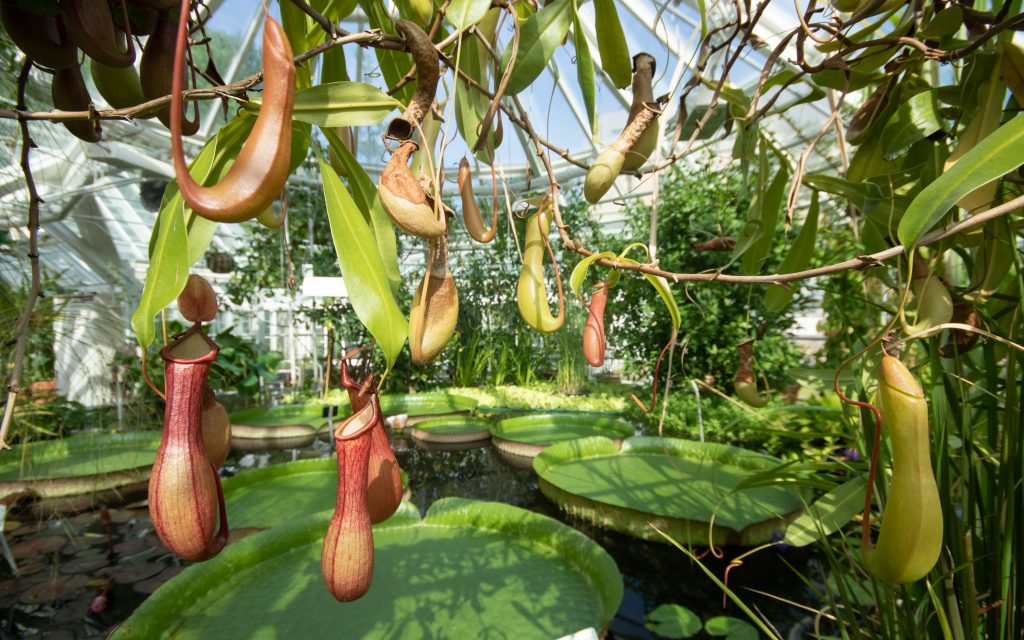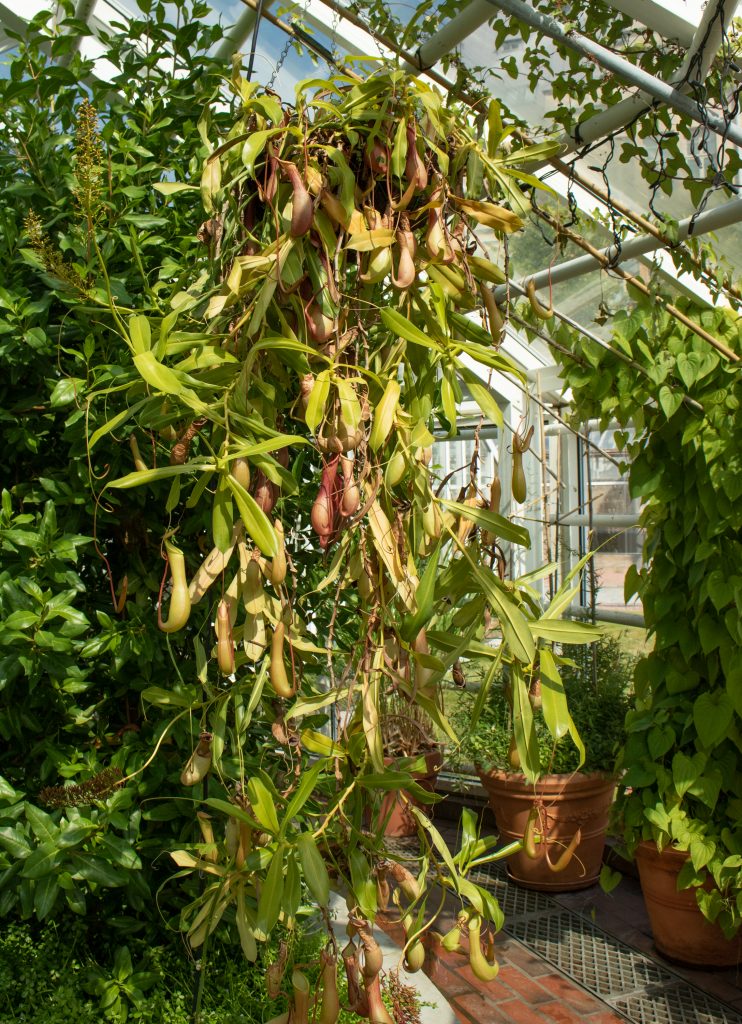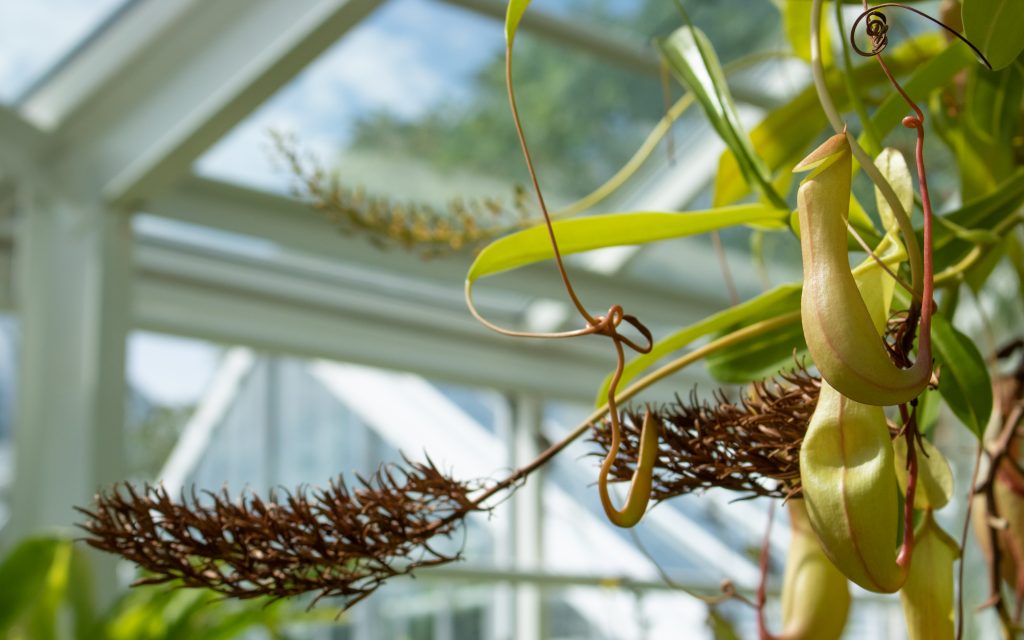Secretive predators
Carnivorous plants known as pitcher plants grow in the baskets that hang from the ceiling of the Waterlily Room. These plants can survive in otherwise nutrient-poor conditions by getting the nutrients they need, particularly nitrogen, from insects.
The pitchers are trap leaves which the plant uses to attract insects. The “lids” of the pitchers hide glands which emit a scent that appeals to insects. Once they land on the slippery mouth of the pitcher, the insects slip to the bottom and drown. The acidic liquid at the bottom of the pitcher contains enzymes which quickly disintegrate the insect. The human stomach contains similar enzymes. The purpose of the lid is both to emit the scent and to prevent rainwater from diluting the liquid in the pitcher.
The biggest pitcher plants can grow trap leaves as big as a human head. In addition to insects, the skeletons of rats and frogs have been found inside pitcher plants.


